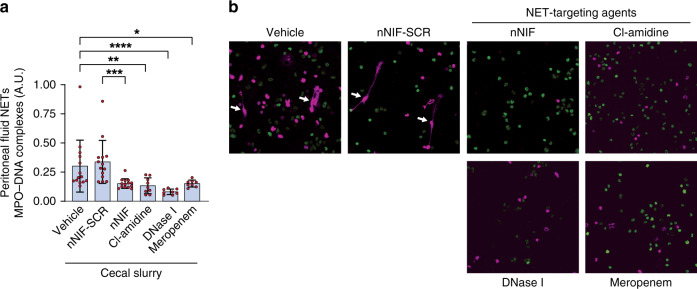Fig. 2. NET inhibition/degradation decreases peritoneal NET formation in experimental neonatal infectious peritonitis.
Seven to 10-day old, outbred Swiss-Webster mice were treated with vehicle, nNIF-SCR (10 mg/kg), nNIF (10 mg/kg), Cl-amidine (40 mg/kg), DNase I (25 mg/kg), or meropenem (25 mg/kg) 1 h prior and 4 h after cecal slurry injection (1.3 mg/gram mouse weight) to induce infectious peritonitis. Twenty-four hours after cecal slurry injection, peritoneal lavage fluid was collected and analyzed quantitatively and qualitatively for the presence of NETs by a MPO–DNA complex ELISA and b live-cell imaging and confocal microscopy. Statistical analysis was performed by comparing treatment groups with their respective controls, i.e., nNIF was compared with nNIF-SCR; the other treatment groups were compared to the vehicle control. N = 8–14 mice per group; Mean ± SD. *P < 0.05; **P < 0.01; ***P < 0.001; ****P < 0.0001. Representative images of peritoneal lavage samples from 8 individual mice per group.

